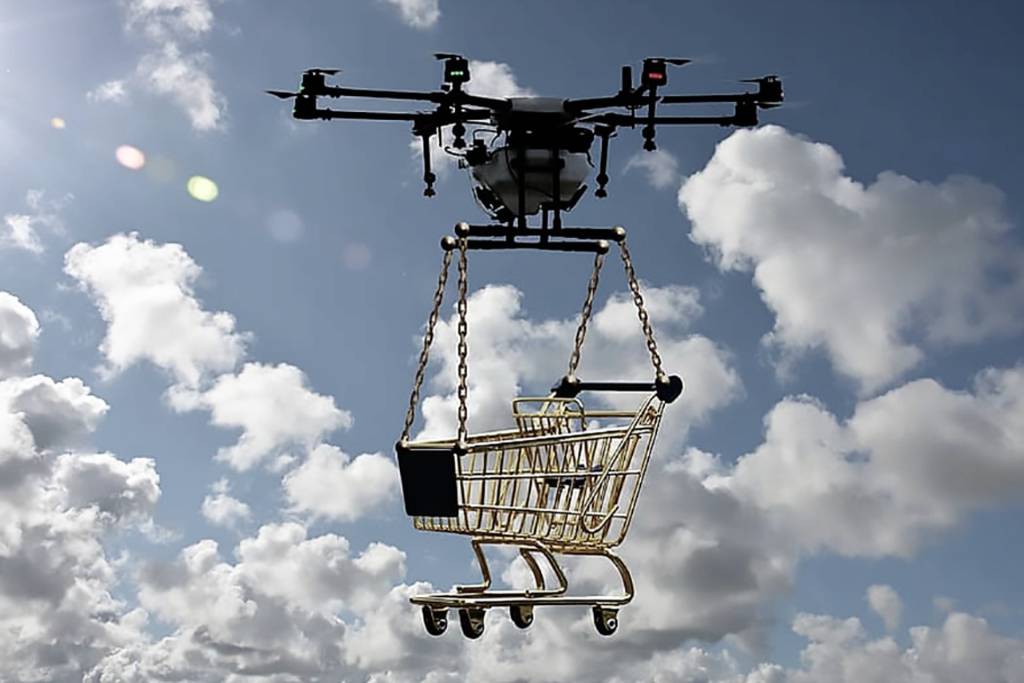Drones are also widely known as unmanned aerial vehicles or UAVs. Many also call them miniature pilotless aircraft.
These flying little robots are capable of reaching places that are hard for people to reach. In comparison to helicopters, flying at low altitudes allows them to obtain clear and high-quality photos. Drones are also capable of capturing a large amount of high-quality data.
As a result, drones are already used to taking magnificent images, conducting airborne inspections and doing a variety of other sophisticated jobs with ease.
Commercial drones have numerous uses. They have made building inspection, construction, oil and gas refinery inspection, etc. easier.
They are equally helpful for farm surveillance and mapping, rescue operations, aerial photography, and thermal imaging.
Drone Technology
Drones have been present for more than two decades, but their origins can be traced back to World War I. This was the time when both the United States and France focused on constructing unmanned aircraft.
However, in terms of drone acceptance, utilization expansion across industries, and worldwide awareness, the previous several years have been noteworthy.
Initially, people used UAVs as fighter planes without the risk of losing soldiers. Since then, drone technology has advanced and thrived in recent years.
There is no doubt that drone technology, which is a part of robotics, will change the future tremendously. Individuals, businesses, and governments have already realized that UAVs will offer a wide range of applications.
Current and Future Possibilities of Drones
Package Delivery
Drone delivery is nowadays very popular in many countries. It’s going to be a part of daily life in the coming years.
Several firms are already putting the effectiveness of product distribution to the test. For a while, online retailers such as Amazon, Walmart, and some others have been using drone delivery. Some other corporations such as Google are also doing so.
UAVs promise to significantly lower the cost of doing business in the future.
Industrial Inspections Using Drones
Construction businesses, insurance companies, building engineers, and many are using drones.
Moreover, architects are using drones to check the building envelope. This enables them to collect a wide range of information, such as pictures of the structure and the identification of flaws. These flaws include corrosion, heat loss, and more.
UAVs also enable the oil and gas industry to conduct drone inspections and gather a variety of essential data rapidly at a lower cost. Furthermore, they are lowering the dangers associated with rope access, swing stages, and scaffoldings. This eliminates the risk of the workers in the industry by a big margin.
Filming Using Drones
Drones are excellent marketing tools that may assist a company in developing unique and compelling content and video campaigns.
They offer the benefit of recording a high-quality video or taking an image in a fraction of the time. It can also snap pictures from any angle and in any direction. Drones can do all these at a very lower cost.
In the future, real estate businesses, tourist resorts, colleges, motion picture and photography studios, and many other industries will use these miniature pilotless aircraft. They will be able to demonstrate to potential clients the structures and amenities, as well as the surrounding area.
Inspecting Risky Places Using Drones
There are various situations where access to the area is difficult. Or, it is simply inaccessible to humans for research or exploration.
Examples include caves, hilly areas, or places hit by natural disasters. Drones now can collect visual data from such places. Thus, they have increased the amount of data collection and removed the risk of investigators and researchers getting hurt.
Transporting Humanitarian Aid Supplies
Drones will bring goods to remote or inaccessible regions in the future.
They will transport medical supplies and vaccinations to remote sites and risky locations. They will also do well in places with conflict or infectious illnesses.
Rescue missions, disaster management, healthcare, and other applications will be available. This will boost the safety of rescue workers.
At the same time, it will ensure timely humanitarian supplies to help them in need.
Drones: Our Likely Future
From an Amazon LLC-affiliated website for advertising Airdronecraze, it was estimated that there are seven generations of drone technology. The current development of drones is in the fifth generation.
- 1st Generation: All types of fundamental remote control aircraft.
- 2nd Generation: Static design, fixed camera mount, video and still photography recording, manual piloting control.
- 3rd Generation: Static designs, HD video, 2-axis gimbals, basic safety models, and aided piloting to remote places.
- 4th Generation: Revolutionary designs, 3-axis gimbals, enhanced safety modes, 1080P HD video, and autopilot modes.
- 5th Generation: Revolutionary designs, 360-degree gimbals, 4K video or higher-value instruments, and intelligent flying modes.
- 6th Generation: Commercial compatibility, designs based on safety and regulatory standards, platform and payload suppleness, etc.
- Also, automatic safety modes, intelligent piloting models, airspace awareness, and more.
- 7th Generation: Designs based on fully compliant safety and regulatory standards, total commercial applicability, platform and payload exchangeability, mechanized safety modes, increased intelligent piloting models, complete airspace awareness, and automated action.
Final Words
Drone technology is undergoing a revolution that will open up new options in the transportation, military, logistical, and commercial sectors.
Drones become safer and more trustworthy with the advancement of technology. It’s expected that as drone technologies evolve, the world will loosen the strict laws regarding the use of drones. This will help support the widespread use of drones.













